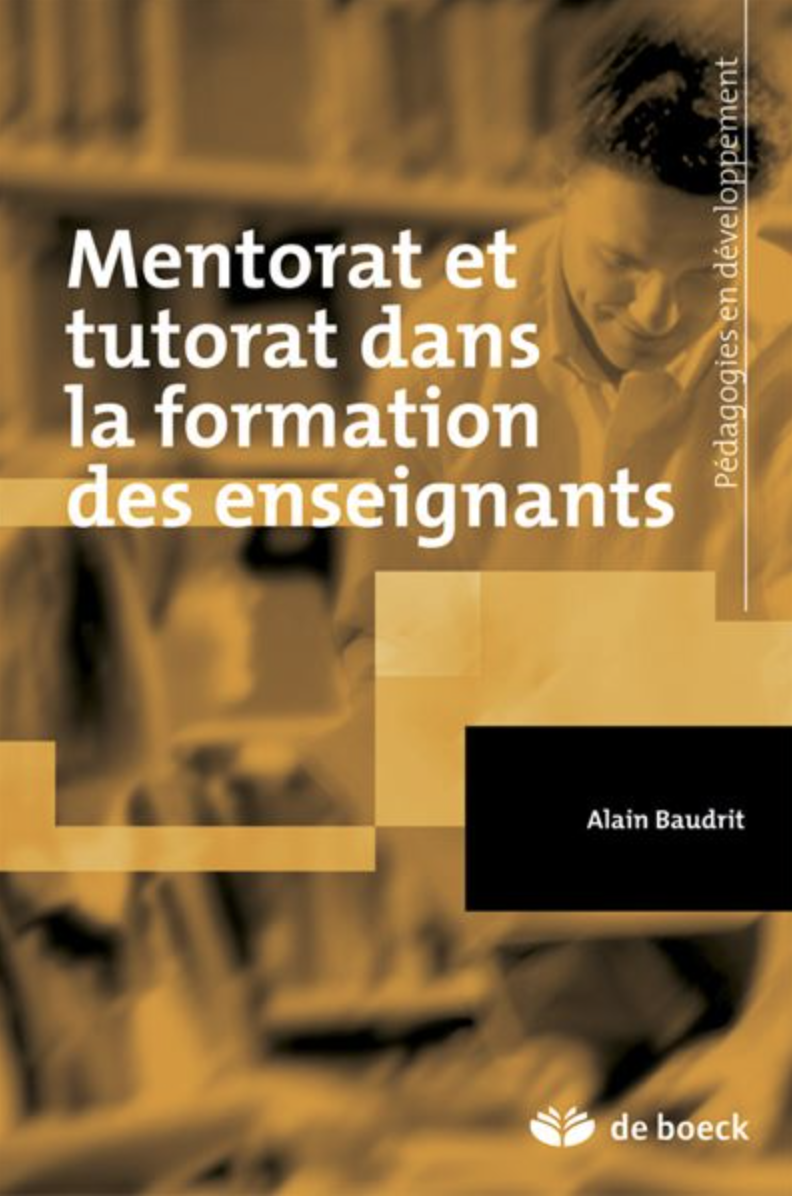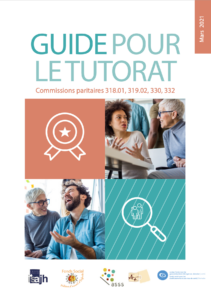Tutoring presents itself as a revolutionary learning method, capable of radically transforming the educational experience for learners and trainers alike. This approach, based on a one-to-one coaching relationship, enables a tutor to guide and direct the learning of an individual or a group. Unlike conventional teaching, the tutor does not offer ready-made answers, but rather accompanies learners in their search for their own solutions. This interactive process, based on stimulating questions, enriching discussions and guided reflection, fits perfectly within the framework required by Qualiopi.
If you're a trainer looking to optimize your pedagogical approach, a learner looking to maximize your learning potential, or an organization with ambitions to enrich your training offering, this article from the Apolearn team will provide you with a comprehensive overview of the benefits and strategies of tutoring.
The benefits of tutoring
Tutoring is a comprehensive strategy that benefits all parties involved in the educational process. From the learner to the trainer to the training center itself, the benefits of tutoring are diverse and significant.
Benefits for the learner.
Tutoring is a form of individualized teaching and learning that offers many advantages for the learner. These include:
- Personalized learning: every learner is unique, with his or her own needs, skills and learning pace. Tutoring enables us to adapt to these specificities, promoting better understanding and retention of knowledge.
- Reduced failure and drop-out rates: personalized support from a tutor can considerably reduce failure and drop-out rates, especially among learners who are experiencing difficulties.
- Boosting self-confidence, autonomy and motivation: tutoring can boost learners' self-confidence, autonomy and motivation, qualities that are essential to the success of any learning path. Learners may feel more comfortable asking questions and seeking help from a tutor. This can help build confidence in their abilities. If they feel supported and encouraged by their tutor, this can help boost their motivation and make them want to learn.
Benefits for the trainer.
Tutoring is a form of individualized teaching and learning that offers many advantages to trainers. These include a better understanding of learners' needs
For example, tutors can :
- Spend time talking with learners about their goals, interests and challenges
- Observe learners learning and solving problems
- Provide feedback to learners on their progress
The information gathered enables tutors to better understand what motivates learners, what they find difficult and what they find easy.
Being a tutor is a very rewarding experience for trainers, and by working in a more individualized way, we can see more clearly the impact of their work on learners.
Having visibility of the impact of tutoring can be extremely gratifying for trainers. It can give us a sense of professional satisfaction and, above all, a sense of mission. What's more, it can serve as motivation to continue improving their teaching methods and helping more learners.
Benefits for the training center.
Tutoring enables a training center to better meet the individual needs of learners. Training centers that adopt a tutoring approach often achieve higher success rates. This is mainly due to the fact that tutoring enables learners to overcome their difficulties and achieve their objectives. We also find that those who offer a quality tutoring program are perceived as being more successful and more committed to the success of their learners. Finally, following the implementation of this scheme, we often observe an increase in the number of applications and an improvement in the center's image.
Tutor profile
Tutoring is a form of individualized teaching and learning that involves a learner and a tutor. The tutor is a qualified professional who provides support and guidance to the learner. His or her objectives are to help the learner achieve his or her learning goals, develop skills and grow. To achieve these objectives, the tutor must possess knowledge and skills in the relevant learning area. They must also be able to adapt to the learner's needs and create a positive, constructive learning environment.
In some cases, the tutor can also be a business expert. For example, a company tutor may be an employee with experience in the company's field. This tutor can provide his or her apprentice with valuable business expertise, as well as practical experience of the world of work. The tutor is not necessarily a business expert. They can be teachers, trainers, volunteers or any other person with the knowledge and skills needed to help a learner succeed.
There are several methods that can be adapted to suit the specific needs of learners and trainers. Here are just a few.
Individual tutoring
Group tutoring
Synchronous vs. asynchronous tutoring
Asynchronous tutoring
Peer tutoring
Reverse tutoring
Online and blended tutoring
With the rise of technology, online tutoring has become increasingly popular. It allows learners and tutors to connect regardless of their geographical location. Blended tutoring combines elements of face-to-face and online tutoring to create a more complete and flexible learning experience.

Teaching skills
A good tutor needs to have a solid understanding of the principles of learning, whether for adults or children, depending on the target audience. This includes knowledge of learning theories, different learning styles, and assessment methods. The tutor must be able to apply these principles in practice, adapting his or her approach to meet the individual needs of each learner.
Training and certification
There are specific training programs for tutors aimed at providing them with the skills they need to guide learners effectively. These programs often cover topics such as communication techniques, time management and assessment methods. Certification can serve as a guarantee of quality, as the tutor has undergone formal training and possesses the necessary skills to be effective.
Personal qualities
In addition to technical and pedagogical skills, an effective tutor must possess certain personal qualities. Empathy enables the tutor to understand the needs and challenges faced by the learner. Patience is crucial to enable the learner to progress at his or her own pace. Finally, excellent communication skills are essential to explain complex concepts in a straightforward manner and to encourage open dialogue.
The Belgian association APEF has published a short guide in PDF format to help you set up quality tutoring.
This guide, entitled "Guide to tutoring", is available to download free of charge from the APEF website.
This guide will provide you with numerous insights, including on
- The different types of tutoring
Roles and responsibilities of tutor and mentee
Steps in setting up tutoring
Useful tools and resources
Unisciel, a French higher education and research association, has published a free .pdf guide to tutoring in a problem-based learning (PBL) context.
APP is an active teaching method based on solving complex problems. Tutoring is a form of individualized teaching and learning that can be very beneficial in this context.
The Unisciel guide offers practical advice on how to run a tutoring program in an APP. It covers the following points in particular:
- The objectives of APP tutoring
- The tutor's roles and responsibilities
- Tutoring techniques
- Useful tools and resources
The tutor's role is complex, and goes far beyond simply providing methodological support or imparting knowledge. Here's a detailed exploration of the various facets of this role, the tutor is a :
Learning facilitator
The tutor helps to achieve the objectives of the course and its component activities. He or she does not decide for the learner or the group, but rather facilitates the learning process by guiding learners towards the achievement of their objectives.
Promoting collaboration
The tutor encourages collaboration between learners, whether they are individuals or groups. They encourage interaction and information sharing, enriching the learning experience for all.
Architect of group identity
In a group context, the tutor can encourage learners to give themselves a name, an identity and values. He or she helps the group to define its mode of operation, communication, roles, rules and objectives.
Guardian of the group's autonomy and existence
The tutor ensures that the group shares a sense of existence and autonomy. He guides learners in planning and carrying out tasks, while ensuring that responsibility for planning lies with the learners themselves.
Individual support
The tutor also provides individual support for the learner, according to his or her specific motivational, cognitive and emotional needs.
Mediator in case of conflict
The tutor can intervene to resolve internal conflicts within the group, acting as an impartial mediator and proposing constructive solutions.
In short, tutoring is a fundamental pedagogical approach, playing a pivotal role in supporting learners throughout their learning journey. Beyond its primary function of methodological support and knowledge transmission, the tutor's role extends to broader dimensions. He becomes a learning facilitator, a catalyst for collaboration, an architect of group identity, a promoter of autonomy, an individualized coach and an effective mediator in the event of conflict.
This approach, adapted to a variety of contexts and needs, greatly enriches the educational experience and offers tangible benefits for learners, trainers and training centers alike. By establishing deeper, more personalized learning relationships, tutoring contributes to higher levels of understanding, competence and confidence among learners.
Apolearn, as a social and collaborative learning platform, recognizes and values the essential role of tutoring in modern education. We are committed to providing the tools, resources and support needed to facilitate the implementation of effective tutoring strategies, thereby contributing to the advancement of teaching and learning.
Apolearn remains committed to being your partner in educational innovation, not only by supporting you but also by providing tailor-made solutions that meet the demands of contemporary education.










